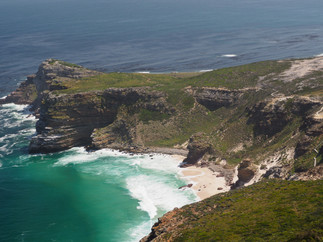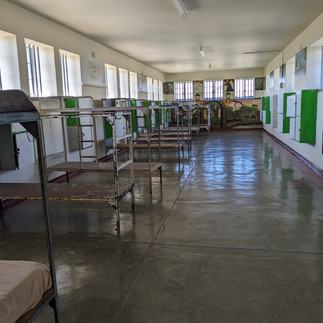4 Days in Cape Town, South Africa
- muse7699
- Mar 1, 2024
- 3 min read
October 2023

Cape Town is a port city on South Africa’s southwest coast, on a peninsula beneath the imposing Table Mountain. It is the country's oldest city and home to the Parliament of South Africa. Highlights of the city include the cable cars that climb to the mountain’s flat top, from which there are sweeping views of the city. The busy Victoria and Albert Waterfront filled with shops and restaurants where you catch boats heading for Robben Island, the notorious prison that once held Nelson Mandela.
I was able to spend five days in this wonderful city.

Day 1. Hop on Hop Off Sightseeing Tour
It was a picture-perfect day to take the cable cars up Table Mountain. To get there I used the big red tourist buses to get an overview of the city. The mountain is rich in diverse wildlife, including the rock hyrax and plant species. Table Mountain is perhaps best known for its flat top which, because it resembles a tabletop, has garnered the mountain its now famous name.
Next stop on the sightseeing bus was Camps Bay, a seaside beach area where I had lunch and some infamous S. African wines and people watched.
Last stop of the day was the V&A waterfront where I went for a nice leisurely stroll among the shops and settled in for a nice pizza dinner.

Day 2 - Cape Peninsula Tour
A full day sightseeing tour with visits to Boulder Beach, Cape Point Nature Reserve and see the Penguin colony. Cape Point is home to the Cape of Good Hope, one of the southernmost points of the African Continent. We also stopped in Hout's Bay for an optional boat trip to Seal Island. Here is the tour I did.

Day 3 - Bo Kaap walking tour and Cape Malay Cooking Class.
Situated at the foot of Signal Hill, on the fringe of the city center, and formerly known as the Malay Quarter, Bo-Kaap’s origins date back to the 1760s when numerous ‘huurhuisjes’ (rental houses) were built and leased to slaves. These individuals, known as Cape Malays, were brought from Malaysia, Indonesia and the rest of Africa to work in the Cape. The houses in Bo-Kaap are a mix of Cape Dutch and Georgian architecture, positioned in distinctive multi-coloured rows on steeply cobbled roads. Cape Malay food is a mixture of African and Indonesian spices and mainly curries.


Day 4 - Township Tour and Robben Island.
Growing up in the 1970's and 1980's you couldn't go anywhere without hearing the words Apartheid and the systematic institutionalized racial segregation. It was and still is a system that insured that South Africa was dominated politically, socially and economically by the white minority population who lived in townships. Apartheid forcibly removed 60,000 people from district six and moved them to townships. Townships are underdeveloped racially segregated urban areas that, from the late 19th century until the end of apartheid, were reserved for the non-whites, namely Black Africans, Coloureds and Indians. Economic division is also seen within each township. During an all-day tour I had a chance to visit one of the largest townships called Langa.
In the afternoon we boarded a ferry to Robben's Island. Originally a Dutch settlement and later a British penal colony, Robben Island served many purposes throughout its history. Between the 17th to the 20th century, it had been (most famously) used as a prison, a hospital for those deemed “socially unfit” or “socially undesirable”, and a military outpost. Our tour guide was a former political activist and prisoner. Robben Island is most famously known as the site where Nelson Mandela was imprisoned for 17 years before the fall of apartheid.
"We want Robben Island to reflect the triumph of freedom and the human dignity over oppression and humiliation."


































Comments